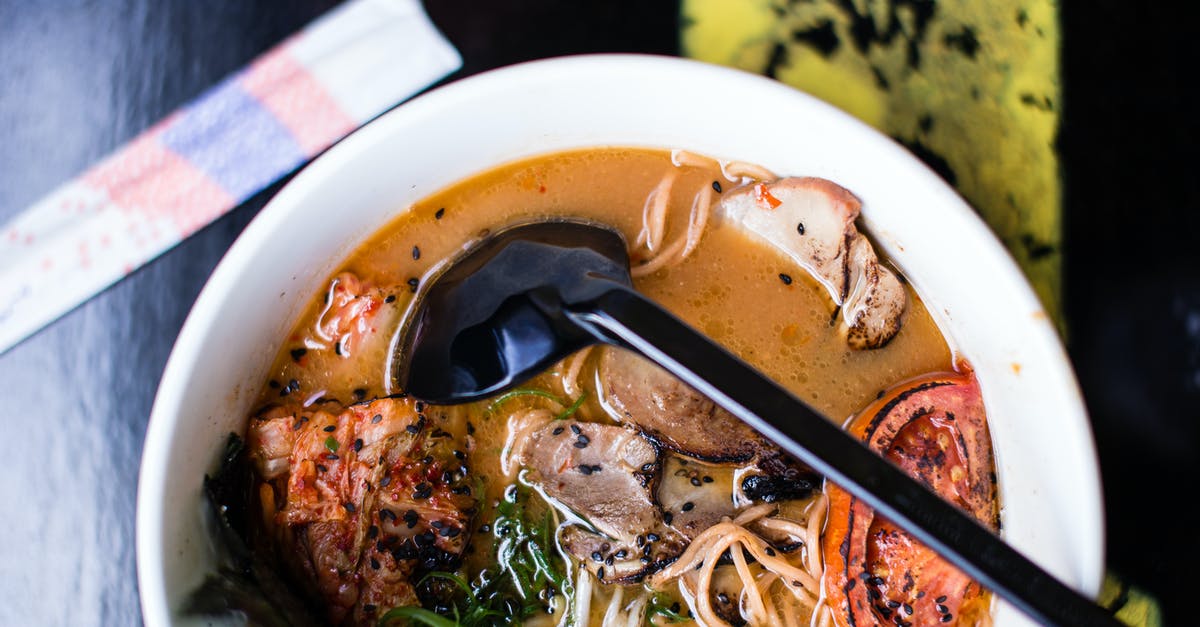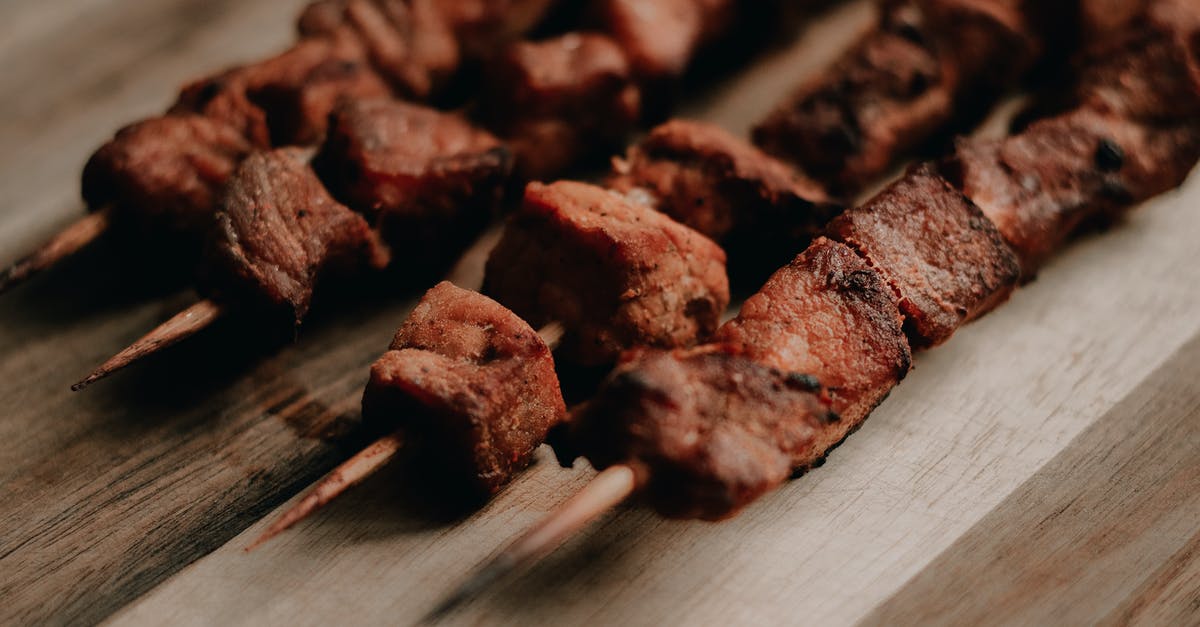Why do they put the jelly-like substance in pork pies?

I don't like the jelly-like substance found in between the pastry and meat of pork pies, and I don't know anyone that does, so I was wondering why they put it in. Or is it a by-product of the cooking/manufacturing process? Why is it there, and is it possible to create a pork pie without it?
Best Answer
There used to be a good reason to add the jelly to the meat pie: food safety. In the time before refrigerators, it was hard to keep meat without some spoilage. But a slaughtered fully grown pig meant some hundred kilos of meat, and it wasn't eaten on a single day.
Most of the bacteria which spoil meat need oxygen to proliferate. So once you pack the meat into a clinging skin, it keeps for longer. This is one of the reasons why people bothered to bake meat pies instead of roasts in the first place.
But there is a problem with meat pies. As the other answers mentioned, the meat steams while being baked, and this steam must be gathered below the upper crust and vented through a hole. You can't tightly wrap the meat in the crust and then bake; the steam will probably open the seam, resulting in an irregularly shaped pie, and the crust still won't cling. So, a meat pie has some space between the meat and the roof.
I don't know how quickly such a pie will dry out, as ElendilTheTall suggested. Surely, this is a factor. But I bet that, if you keep it outside of a refrigerator, it will spoil long before it dries. Filling this space with jelly (which happens to be available in big amounts too - after all, we just slaughtered our big pig and want to cook lots of it as quickly as possible, so we probably have more stock than we can use up) practically seals the meat airtight against bacteria. And while the cooks from that time didn't know about bacteria, they sure knew how quick a piece of meat spoils visibly (smellably?). This is how the traditional jelly-topped meat pie recipe was born.
We have refrigerators today, but we still follow the recipes as they always were. I don't see any reason not to. Drying out is probably a factor. And as for the taste - I have eaten more French patês than English meat pies, and maybe there is some difference. They never looked like on sarge_smith's picture. But I definitely like the jelly layer. I must confess that I have always eaten it in good restaurants or home made, so maybe the poor quality has ruined it for you.
But anyway, if you want to bake meat pies without it, you don't have to include it. The problem is that, if you leave the space hollow, you'll have a cosmetic problem (your crust will probably shatter when you try to cut it) and the already mentioned drying possibility. The solution is to bake the pie without the upper crust. You'll then have meat pie slices which only have crust on three sides. If you don't want a baked crust to form on the meat, or if you experience heat control problems because of the missing insulator, use a temporary cover (aluminum foil, bacon stripes, or lay some big lettuce leaves on it and throw out later, or you can try a plate, but must somehow leave an opening for the steam). If you want a pie with four crust sides, blind bake a sheet of pastry pre-cut for the open side (allow for shrinkage when cutting), then glue it to the meat pie somehow. Sticky honey glaze, or a layer of cream cheese should work (as would jellied stock :) )
This doesn't guarantee that you won't get some congealed fluid within the pie. sarge_smith correctly pointed out that the meat in a pie is collagen-rich, and all the juices which would become roast drippings in roasted meat are staying between the meat and the crust. Some will get absorbed, but maybe not all. It may be worth to try making the pie with ground tender meat. I am however not sure whether this will provide you with a good jelliless pie, or with a pie with a soggy crust.
Pictures about "Why do they put the jelly-like substance in pork pies?"



Quick Answer about "Why do they put the jelly-like substance in pork pies?"
The jelly in British pork pies is added deliberately, after the rest of the pie is cooked, to help keep the meat moist. In good pies it is usually either ham or chicken stock which jellifies as it cools.What is the jelly on pork?
Pork jelly is an aspic made from low-grade cuts of pig meat, such as trotters, that contain a significant proportion of connective tissue.Do Melton Mowbray pork pies have jelly in them?
Melton Mowbray Pork Pies have a jelly, made from gelatine or bonestock, added to fill the gaps and help preserve the meat. This also helps to keep the pie moist. To meet the requirements of the Protected Geographical Indication the pies must be free from artificial colours, flavours and preservatives.What is the jelly that comes out of cooked meat?
\u201cJelly\u201d means collagen breakdown to gelatin. Gelatin thickens a liquid, so you know that the meat must be cooked past the blue-rare stage so the meat fibers contract enough to expel some moisture.PORK PIES | How It's Made
More answers regarding why do they put the jelly-like substance in pork pies?
Answer 2
The jelly in British pork pies is added deliberately, after the rest of the pie is cooked, to help keep the meat moist. In good pies it is usually either ham or chicken stock which jellifies as it cools.
It is entirely possible to make a pork pie and omit this step at the end, but the pie then needs to be eaten sooner before it dries out.
Answer 3
I have been a baker for over 30 years and made many pork pies in that time,the above answers stating that the jelly acts as a preservative and stops the meat drying out are correct, but also the jelly when added at the correct time, roughly 20 minutes half an hour after baking, absorb the pork juices that would otherwise soak into the pastry which would make the pastry limp and not crisp and eventually go dry.
Answer 4
As the answers included above, the jelly traditionally found in pork pies was used as preservative and to keep the meat most. However clarified butter was more commonly used as a preservative in pies.
Try making a more filled pork pie using a mold to stop the seams from splitting during the cooking process, so you don't have a gap where the jelly should go. Or try making your own jelly. Get some split trotter, tails from the butchers and boil it up with a carrot and onion (this will also give a natural colour to the jelly) cloves, allspice, thyme and rosemary. Leave the jelly to set over night in the fridge and scape off the fat on the top. Bring it back to the boil before pouring it into your pie with a small funnel or an icing syringe which I use.
I think by simply knowing where the jelly has come from will make it more palatable and using natural jelly which is home spiced is much better than that found in manufactured pies.
Also use good pork; outdoor reared, grass fed pies will have more nutrition and more flavour. When starting my own pork pie business I was fully aware of people's disgust at the jelly, I now have many customers who never like jelly but thoroughly enjoy the jelly in my pies.
Answer 5
Another reason is simply that it tastes good. I have always loved the 'jelly' from being a little girl, when a pork pie is heated the jelly melts and the juice is delicious. I am 73 and remember pouring the juice onto a spoon as a child to sip before devouring the pie.
Sources: Stack Exchange - This article follows the attribution requirements of Stack Exchange and is licensed under CC BY-SA 3.0.
Images: Rachel Claire, Ann H, makafood, ΛLΞX KOZLΞNKO
